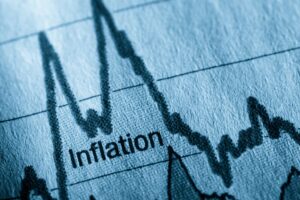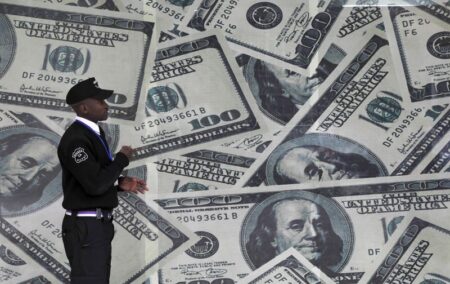By Rae Wee
SINGAPORE (Reuters) -The yen edged higher on Thursday in part due to a broadly weaker dollar, but also drew support from expectations of further rate hikes from the Bank of Japan later this year and some jawboning efforts from Japanese government officials.
Down Under, the Australian dollar jumped after data on Thursday showed employment rebounded sharply in February and the jobless rate dived far below forecasts, pointing to a still-tight labour market.
The yen rallied nearly 0.7% to a session-peak of 150.265 per dollar earlier in the day, reversing some of its heavy losses in the wake of this week’s BOJ policy pivot.
It was last 0.2% higher at 150.95.
The yen drew support from a newspaper report of growing bets of another BOJ rate hike in July or October, and as governor Kazuo Ueda on Thursday signalled that the central bank would move slowly but steadily towards normalising monetary policy.
“Today’s move in (dollar/yen) is a combination of U.S. rates further coming down and BOJ governor’s hawkish comments,” said Chandresh Jain, FX and rates strategist, global markets APAC at BNP Paribas (OTC:).
Earlier on Thursday, the country’s finance minister Shunichi Suzuki also said the government was watching currency market moves with “a high sense of urgency”, following the yen’s decline to a four-month trough of 151.82 in the previous session and toward a multi-decade low.
“I think there’s a bit of jawboning going on… given that the speed of the yen move has probably been a bit too rapid for what the Ministry of Finance officials would like to see,” said Moh Siong Sim, a currency strategist at Bank of Singapore.
Still, the main driver remained a sliding U.S. dollar, after the Federal Reserve maintained its projections for interest rate cuts for the year in the face of upside surprises on inflation, and did not strike a more hawkish tone as some investors had feared.
At the conclusion of the Fed’s policy meeting on Wednesday, Chair Jerome Powell said recent high inflation readings had not changed the underlying trend of slowly easing price pressures in the United States. The central bank stayed on track for three rate cuts this year, even though it projected slightly slower progress on inflation.
That sent the greenback tumbling as traders were quick to rebuild bets of a Fed easing cycle beginning in June, with markets now pricing in a 75% chance of a rate cut that month, compared to 59% chance a day earlier, according to the CME FedWatch tool.
The euro and sterling notched one-week highs against the dollar on Thursday, rising to $1.0939 and $1.2803, respectively.
“The Fed really, really wants its soft-landing ending. Stronger growth, lower unemployment, higher inflation – and yet still no change to the median dot,” said Seema Shah, chief global strategist at Principal Asset Management.
“Powell has perhaps shown his cards: he needs a good reason not to cut rates, rather than a reason to cut rates.”
The was little changed at 103.24, after having slid more than 0.5% on Wednesday.
The Bank of England (BoE) is next on investors’ radar as it announces its rate decision later on Thursday, where expectations are for the central bank to keep rates on hold.
British inflation slowed in February, official data on Wednesday showed, keeping the BoE on track to start cutting borrowing costs later this year.
JOBS SURPRISE
A resurgence in Australia’s February employment figures and a downtick in its jobless rate gave the a boost.
Figures from the Australian Bureau of Statistics on Thursday showed net employment jumped 116,500 in February from January, surging past market expectations for a 40,000 increase, while the jobless rate dropped to 3.7%.
The Australian dollar jumped more than 0.6% to a one-week high of $0.66295.
“Employment data is always very volatile, and no single month of data should be read in isolation. However, today’s figures are too strong to ignore,” said Rob Carnell, ING’s regional head of research for Asia-Pacific.
“In light of this data, (the Reserve Bank of Australia) are probably quietly relieved that they did not go further and adopt an outright easing bias this week.”
The RBA had, at its policy meeting earlier this week, held interest rates steady and watered down its tightening bias.
Elsewhere, the New Zealand dollar was last 0.25% higher at $0.6097, though its gains were capped by data showing New Zealand’s economy shrank slightly in the fourth quarter, putting the country into a technical recession.
Read the full article here












